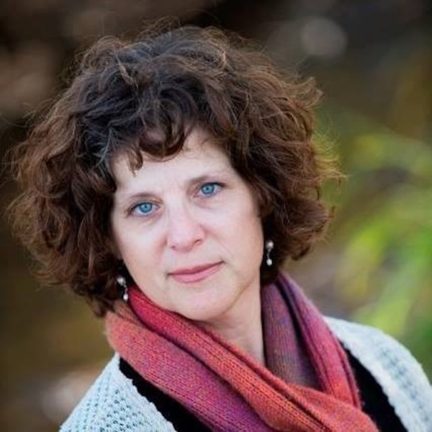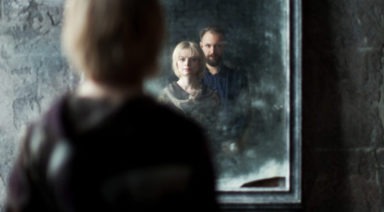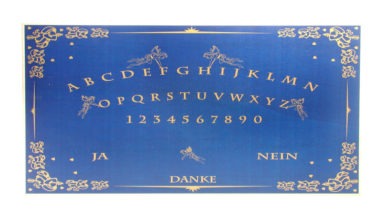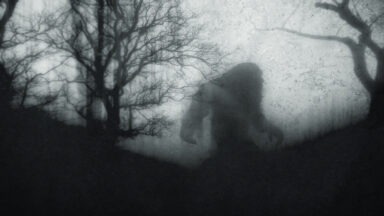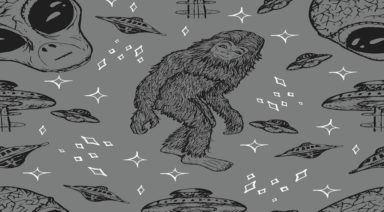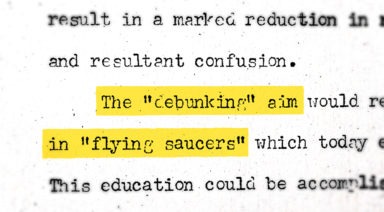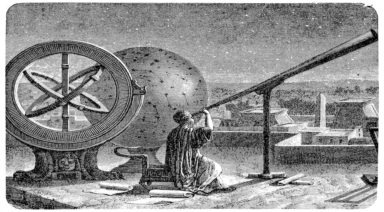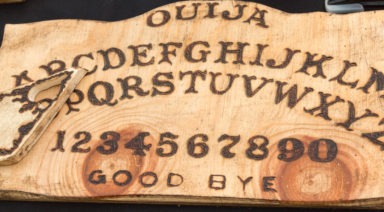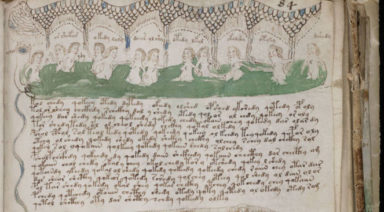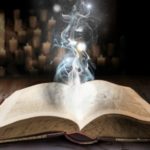Patience Worth; Legitimate Literary Legend or Mythical Ghost?

Imagine being invited to a posh Upper East Side apartment to hear the latest writings of a new literary sensation. The energy in the room buzzing as new poetry is presented with a high degree of wit, skill, and lyricism. Now imagine if that poetry was being channeled through an ordinary housewife from St. Louis, Missouri. That is the legend of Patience Worth, a 17th century literary “spirit,” whose rise to fame catapulted both she and her channeler into overnight sensations.
Patience Worth The Sorry Tale
To understand the mystery surrounding Patience Worth, one must first know about Pearl Curran. Born in 1883, Pearl Lenore Pollard was the only child of an often unemployed railroad worker and an ambitious mother who suffered from nervous ailments.
Curran was a talkative child and an average student. She loved music and aspired to be a singer, but her family’s meager finances were stretched thin to make her dream a reality. Like her mother, Curran struggled with anxiety, to the point of dropping out of school at 13 years old. In 1908, Curran met and married John Curran and moved to St. Louis, a city exploding with opportunities.
As a lonely newlywed, unable to have children (although she and Curran adopted a child and eventually had a child of their own), Curran’s constant companion was Emily Hutchinson, a charismatic writer and devoted practitioner of spiritualism, a popular belief in communication with the dead. After Curran’s father died in 1912, her friend suggested they try to communicate with him through a Ouija board.
Curran found these first attempts at communicating with her dead father silly, however one summer evening in 1913, the first of many communications with the spirit known as Patience Worth began to come forth:
“[The board] raced to the letters M, A, N and Y. Within minutes the women had this message: ‘Many moons ago I lived. Again I come—Patience Worth my name.’
Emily Hutchison tried to take control of the communication with this spirit, but it was clear that Worth had chosen Curran as her medium. Soon, word of Curran’s new talent spread and she began to open her home to the public, supported by her husband John, who took careful notes of Worth’s communications, that were delivered rapidly and without interruption: “The pointer would fly around the board and Pearl would call out words at the rate of 1,500 or so an hour.”
Worth told Curran that she was born in Dorsetshire, England in 1649, the daughter of John and Anne Worth, a seamstress to a nobleman. She communicated that she never married and lived her entire life in the small village. Curran channeled that Worth died at the age of 30-years-old in New England, after a long sea voyage from England to America. While mostly sparse with her life’s details, Worth did reveal certain vivid memories:
“I remember a certain church,” she once dictated, “with its wee windows and its prim walls, with its sanctity and meekness, with its aloofness and chilling godliness…[a]ye, well I remember the heat that foretold the wrath of God, making the Good Man [the parson] sweat. Aye, and Heaven seemed far, far.”
Before becoming the medium through which Worth expressed herself, Pearl Curran’s life was quiet and ordinary. But after making contact with Worth and the otherworld, Curran became almost as much of a curiosity as her subject; a curiosity that expanded to psychologists, who wondered if Curran suffered from multiple personality disorder, or who attributed Worth’s writings to Curran’s own unexpressed subconscious. Despite many attempts, Curran refused to cooperate with those who wanted to study her and her “gift.”
Curran did receive a sense of retribution when in 1927 parapsychologist and founder of the Boston Society for Psychical Research, Walter Franklin Pierce published The Case of Patience Worth, a 500-page book that declared “ordinary” Pearl Curran was merely the conduit for transmitting Worth’s copious literary production.
PATIENCE WORTH’S BOOKS AND POEMS: A LITERARY MYSTERY COMES TO LIFE
As word of Curran’s medium ability grew, so did the demand to know more about the spirit who was channeling through her. In 1915, the religious editorial page editor of the St. Louis Globe-Democrat wrote a series of articles that became the book, Patience Worth: A Psychic Mystery published by Henry Holt, (also a spiritualist). The book included Worth’s poems, and resulted in turning Worth into a literary sensation. Even The New York Times took notice, writing that “Patience Worth[’s] messages out of the darkness never sink to the commonplace level, but always show high intelligence and sometimes are even tipped with the flame of genius.”
The country and the literary world were so entranced by Worth’s literary mystery that her work began to appear in print almost as quickly as Curran could channel them.
A PROLIFIC WRITER: WORTH HER WEIGHT IN POEMS
To say that Worth was a prolific writer would be an understatement, as proven hundreds of poems to a number of plays, short stories and seven novels. Her most well known novel, The Sorry Tale: A Story in the Time of Christ, was published in 1917 to wide public and critical acclaim. In addition to these works, she was much loved and often quoted for her proverbs, such as “the owl is silent, and credited with much wisdom.”
Worth was so well-respected in literary circles that the Joint Committee of Literary Arts of New York recognized her as one of the country’s most extraordinary writers. But, her literary esteem was short-lived, as writing styles and readers tastes changed to voices such as Hemingway and F. Scott Fitzgerald.
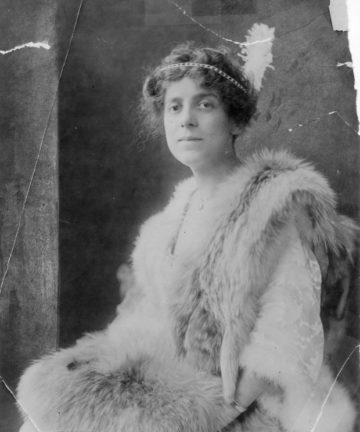
Her follow-up novel, Hope Trueblood, received mixed reviews, with the Atlantic Monthly calling the author and her “otherworldly” followers “silly as they are dull.”
FLEETING FAME FOR WORTH AND CURRAN
By the 1920s, Curran and her husband experienced financial troubles, having not benefited from the publication of Worth’s books. John Curran died in 1922, leaving Curran with two children to support. To earn money, Curran began traveling with a gilded Ouija board, offering readings to celebrities include Ethel Barrymore and Douglas Fairbanks, Jr. After two brief and unsuccessful marriages, Curran moved to Los Angeles where her finances remained meager, but she was in demand as a medium in artistic circles.
Throughout all the ups and downs of fame and celebrity, Worth remained a constant for Curran, who reportedly continued to communicate to her one week before Curran died on December 3, 1937 from pneumonia. There have never been any other recorded or verified communications from Worth after Curran’s death.
For believers in the paranormal and in communicating with the great beyond, Patience Worth represents the power of the human spirit that is not bound by death. To skeptics, Worth is nothing more than the subconscious iterations of an unlikely and ordinary person named Pearl Curran. Whatever one believes, we can agree that the power to create, connect, and communicate is universal across physical and psychic boundaries.
Contacting the Dead Through Psychomanteum Mirror Gazing

Is it possible to connect with loved ones after they’ve moved on from this lifetime? Many people have reported apparitions or felt the presence of an otherworldly spirit at some point in their lives, but those experiences are often spontaneous or fleeting.
While séances and psychic sessions claim to produce connections with the departed, there is another lesser-known method that dates back to ancient Greece: the psychomanteum experience. This modernized practice of mirror gazing has been developed by Dr. Raymond Moody, a man who has devoted his life to studying near-death experiences and, through this process, has had some profound results.
The Ancient Greek Psychomanteum: A Portal to the Dead
In ancient Greece, people would go to a Necromanteion, a ziggurat-like temple that was devoted to Hades, Persephone, and the dead, in order to contact the spirits of their departed relatives. The word Necromanteion translates to “oracle of the dead,” and it was believed that these locations served as gateways between the worlds of the living and the deceased. The most famous of these temples was the Necromanteion of Ephyra, where visitors attempted to communicate with spirits.
Rituals at the Greek Necromanteion
To prepare for these encounters, visitors underwent elaborate rituals that included:
- A ceremonial meal – consisting of barley bread, broad beans, pork, and oysters.
- A cleansing process – involving purification ceremonies
- Animal sacrifices – offered to the Gods of the Underworld
- A mirrored hallway – created by filling a bronze cauldron with water, which was polished frequently to ensure a highly reflective surface.
Under dim lighting, with flickering lamps casting eerie reflections, participants gazed into the water, awaiting visions of their deceased loved ones. Temple priests guided the ritual, chanting invocations to summon spirits. If contact was made, apparitions appeared in the water, whispers echoed through the chamber, or messages came through the priests. To close the ritual, a banishing ceremony ensured no spirits lingered, allowing the living to return unharmed.
Dr. Raymond Moody’s Mirror Gazing
Dr. Raymond Moody, a philosopher, psychiatrist, physician, and author of Life After Life (1975) and Reunions: Visionary Encounters with Departed Loved Ones (1993) is best known for coining the term near-death experience and for his research on consciousness and the afterlife. Inspired by theater of the mind techniques found in ancient texts, Moody revived the concept of the psychomanteum as a method for making contact with spirits. He has dedicated his life to exploring NDEs and contact with the spirit world.
Dr. Moody’s psychomanteum approach differs from the Greek tradition by eliminating animal sacrifice and ritual meals, instead focusing on a structured and meditative environment designed to induce an altered state of consciousness. This process mirrors traditional scrying, also known as catoptromancy, where individuals use reflective surfaces to receive visions.

